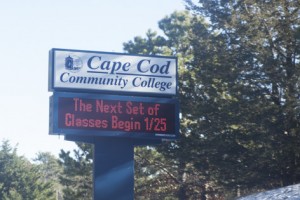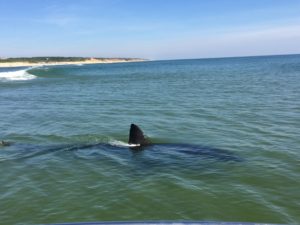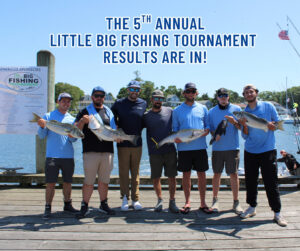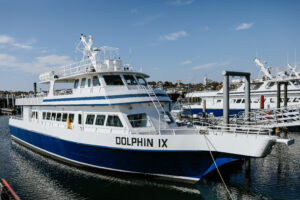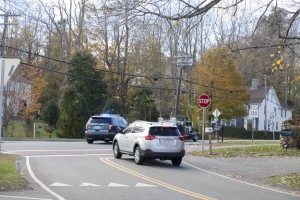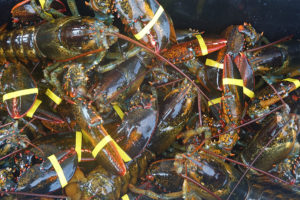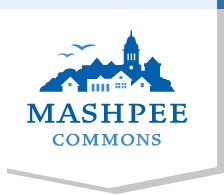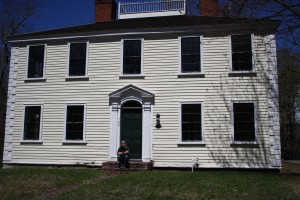
COURTESY OF BILL CANNON/BREWSTER HISTORICAL SOCIETY
Sally Gunning sits on the stoop in front of the Elijah Cobb house, which is being renovated to be a museum and the new home of the Brewster Historical Society.
“And Brewster, before and after Thoreau’s transitory visit, was ‘the modern-built town of the Cape.’ Its streets were shaded with fine old trees, its houses were large and substantial and the men who built and owned them were large and substantial, too. They made their fortunes—fortunes that were the beginnings of bigger ones for their descendants in Boston, New York and many another city—by sailing over pretty nearly all the wet places on the earth’s surface and bargaining and risking and daring, with Yankee shrewdness and Yankee bravery.”
Joseph C. Lincoln, 1905
By JEFF BLANCHARD
History on Cape Cod is like the magma under Yellowstone, a huge, constant force that bubbles up in pockets here and there and occasionally shoots a geyser high into the sky.
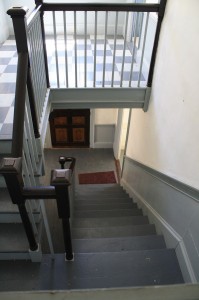
COURTESY BILL CANNON/BREWSTER HISTORICAL SOCIETY
The back stairway in the Cobb houses is one of the many elements that are being saved in the restoration.
In Brewster these days, the geyser grabbing attention is Elijah Cobb (1768-1848), whose enduring legacy is evidenced by the current effort to transform his 215-year old house on Lower Road into the Brewster Historical Society’s new office and museum. The house would replace a building the society leases on Main Street just east of the Cape Cod Sea Camps.
The Brewster Historical Society is 51-years-old now, and it has mounted a million-dollar campaign to establish, for the first time in recent history, a captain’s house that would be open to the public, as Brewster is the Sea Captains’ town, and its history is its stock in trade.
Even as this is being written, workers at the Cobb house (both a residence and an inn at various times since 1799) are peeling back the shrouds of time to reveal carpet-hidden floor boards, colorful decoupage tea boxes that doubled as insulation, massive beams that join in the middle of the attic and support both the house and the widow’s walk above, as well as dentil molding everywhere, stenciled panels, a wrought-iron lock-box in the front door.
“Mullions, quoins, parging, I’m learning all sorts of new words,” Brewster Historical Society Vice President Sally Cabot Gunning said with a smile on a tour around the house, top-to-bottom, inside and out, an hour-long trip back in time.
Gunning is spearheading the effort to transform the Captain Elijah Cobb House on Lower Road into the society’s office and museum. The project is due to be completed next year and the new museum is scheduled to open in the summer of 2016.
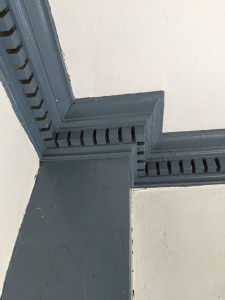
COURTESY BREWSTER HISTORICAL SOCIETY
A closeup of ceiling molding at the Cobb house.
Gunning told of the plans of the Cobb house: where the offices would be, the exhibition space, the captains’ portraits. She shared her knowledge of which parts were original (the well-worn back stairs they are “keeping, absolutely”), and which were changes made by the two owners between Cobb ancestors and today. No longer is the property 14 acres of farm and orchard stretching to the bay as it was when Cobb lived there. Now it’s 1.5 acres, with large trees adding shade and privacy to the periwinkle ground cover that wraps around the backyard.
Tangible evidence of Cobb’s life in Brewster is found at various sites around town.
At the Captains Golf Course is the Port side No. 5, a 155-yard par 3 that is named after Captain Cobb, fittingly, too, if unwittingly, in the sense that any shot over the green will fall down a sheer cliff into a deep abyss, an inevitable metaphor for the high-wire act that was Captain Cobb’s life.
At the Brewster Cemetery on Lower Road, 300 yards west of Cobb’s house, Cobb’s simple, unornamented gravestone reads, “The end of the upright man is peace.”
And at the Cobb house itself, a stately yellow “square-rigger” at 739 Lower Road, on the corner near the community gardens and between the entrances to the Sears Point and the Cobb’s Pond condominiums. The $365,000 renovation is underway at the home designed by Philip Burrill and accurately described both as Federalist (after the political movement) and Georgian (after the kings named George.)
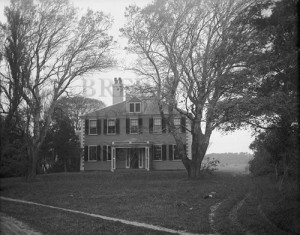
COURTESY BREWSTER HISTORICAL SOCIETY
A photograph taken around 1970 by Captain Cobb’s great granddaughter Caro Dugan who was a photographer. She grew up in the house.
On Monday, May 4, voters at Brewster’s Annual Town Meeting endorsed two measures relating to Cobb: a grant of $100,000 in Community Preservation Act Funding to help renovate the house, recently purchased with society funds for $575,000; and another grant of $86,350 in CPA funding to repair various tombstones and monuments at the cemetery where Cobb and his family were buried, alongside the rest of the Cape-familiar names, Nickerson, Freeman, Hopkins, Clark, Mayo, Foster, Sears, Knowles, Berry, Bangs, Crosby, and so on.
Every one was a Captain.
To them and their progeny, it wasn’t so much a point of pride as a matter of fact that their ancestors came over on the Mayflower, or one of the ships in its ballyhooed wake, as in the case of Cobb’s family.
Elijah Cobb was more than just a sea captain, however. While every town around here may have its native sons and daughters to cherish and celebrate, he was as close as it gets in Brewster to an original town father.
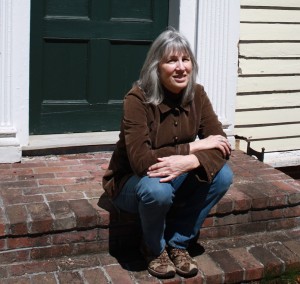
COURTESY BILL CANNON/BREWSTER HISTORICAL SOCIETY
Author Sally Cabot Gunning is vice president of the Brewster Historical Society and is spearheading the effort to transform the Captain Elijah Cobb House on Lower Road into the society’s office and museum, scheduled to open in the summer of 2016.
The son of Scotow Cobb, who died at sea, Elijah was one of six children whose mother was forced to give them up at an early age for work in other households. From age six to 13, Elijah worked until an injury forced him to return home, and shortly thereafter he was sent to sea, ostensibly to recuperate. He walked to Skaket Beach and sailed from there to Boston and then on to Surinam on his first voyage in 1783.
Over the next 40 years, he sailed into the annals of the great sea captains of Brewster, home to more than any other town in the country.
As a 14-year-old with no money, Cobb left home with two bushels of corn for his fare. He returned from South America in 1784 with dried fruit, a barrel of molasses and 21 silver dollars, 20 of which he pressed into his mother’s hand, the most she had ever held.
Some of these details are contained in a compilation of Cobb’s writings published in 1925 by Ralph Paine, including a collection addressed to Cobb’s future grandchildren. These memoirs shed more light on Cobb (and the history of America) than the usual ship logs that all captains kept. The logs include tales of his incredibly lucky timing in meeting with the French leader Maximilien Robespierre—getting the president to make good on a $72,000 bill for cargo that the starving French had pilfered from Cobb’s ship at port—just days before he also witnessed Robespierre’s beheading by guillotine.
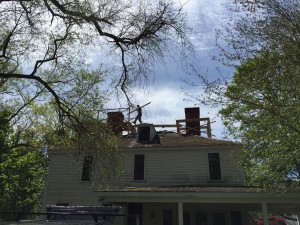
COURTESY BREWSTER HISTORICAL SOCIETY
Masons at work on the Cobb house.
Also included are his encounters with pirates and privateers, barons and barbarians; other captains of sea and industry, and his journey by stagecoach with 24 armed guards riding along.
He was Captain Cobb, Major Cobb, Brigadier General Cobb, Senator Cobb, a founder of the church, a father of the town, a gentleman farmer at the end, and in all cases as far as the evidence goes, a man of faith, integrity, industry, courage and altruism, with a driving force to provide for his family and future generations as a matter dictated by “nature and reason.”
His book can read like a Fodor’s Guide for future captains who may find themselves in a pinch. He tells about how the gates of Hamburg close at sunset and how certain French customs officials might be persuaded by a bribe.
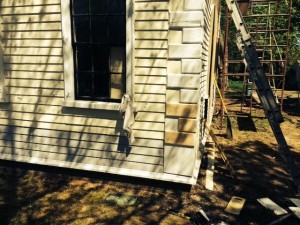
COURTESY BREWSTER HISTORICAL SOCIETY
A close up of quoins, which are masonry blocks at the corner of the exterior wall.
He covers how to get rum into Ireland under the nose of the British and how to get flour out of Virginia just ahead of the Jefferson embargo. On the subject of money, he covers how to get it out of France by going straight to the president, out of Canada in a custom neckerchief, and into his ship-owners’ hands by wit, wisdom and sheer guile.
In the early months of the War of 1812, which was fought more or less over the rights of sailors like Cobb to enjoy unfettered access to trading ports around the world, he was wined and dined by a British officer at a cordial function in Cadiz, then his ship was stopped, boarded and captured by a British Admiral on the high seas as a forbidden American merchant. He was held prisoner in Canada, released to home in Brewster, and soon thereafter he was a key figure in the delicate negotiations between Brewster and a British armada in Cape Cod Bay with cannons aimed toward shore. For $4,000 dollars, the British agreed to hold their fire.
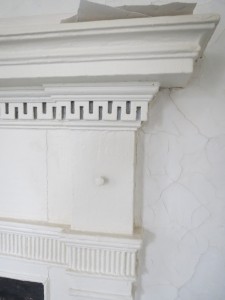
COURTESY BREWSTER HISTORICAL SOCIETY
A detail of molding on a fireplace in the Cobb house.
Cobb was also in the middle of the town’s incorporation in 1803, when the captains on the east side of Harwich decided to split off into a separate town. They took the name of the Mayflower preacher William Brewster, designated spiritual leader of the New World. It was a nod to religion befitting captains such as Cobb, who was a devout Unitarian, and his friend, neighbor and fellow town father Captain Isaac Clark.
While Brewster himself had no particular association with the new town, in those early days church and government were one and the same. As Thoreau explained, the town was “so named after Elder Brewster, for fear he would be forgotten else.”
Among Cobb’s descendants was Caro Dugan, who became a photographer under the tutelage of Cornelius Chenery, a Harvard-trained choirmaster and photographer who happened to stay at the Cobb house when the Dugans were operating it as an inn.
It was Chenery who took the pictures of Helen Keller when Keller was visiting Brewster, and who destroyed all his glass plate negatives when he died. But Dugan, who was Cobb’s great-granddaughter, was able to save 400 late-19th century glass plate negatives from her collaboration with Chenery.
Cobb’s was a life worth remembering, even beyond the 5th hole at the Captains Course, and Sally Gunning and her many mates on this voyage, are jazzed about being able to invite the world into a true captain’s home at long last.
Jeff Blanchard lives with his family in Brewster and volunteers as a tour guide at the Higgins Farm Windmill for the Brewster Historical Society.







